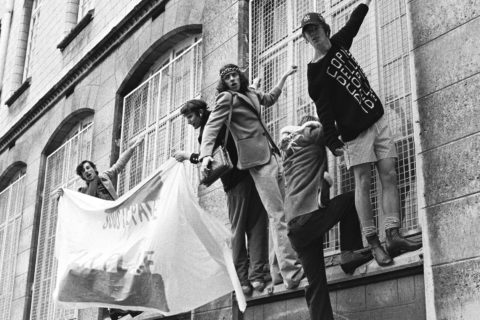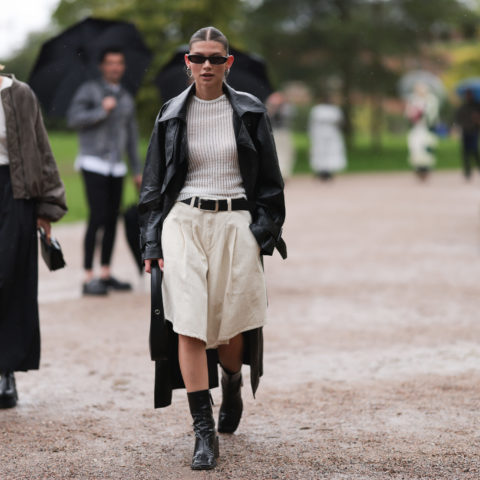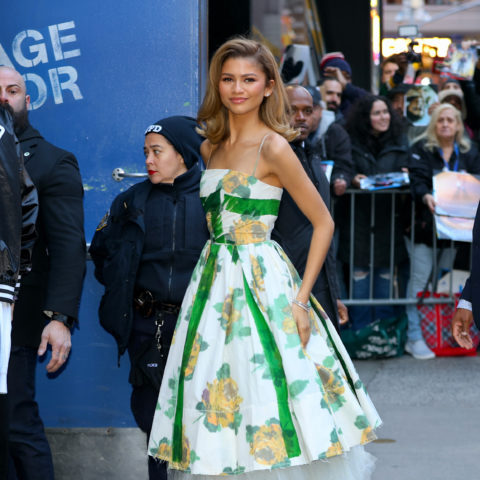50 Years After Mai ’68 the Revolution Is Still Going Strong
Nostalgia for the French student protests of 1968, or “Mai 68,” serves as a reminder of what can, and should, be accomplished today.
There is an enigmatic saying I encountered when I first came to Paris that confounded me and still does to this day: “Sous les pavés, la plage.” In English, it sounds like early Google Translatese “Beneath the cobblestones lies the beach.” What it really means, though, is that when you rise up against the powers that be, you make a kind of paradise.
Each speckled grey cobblestone of Paris is a silent and symbolic revolt. The last time these granite cubes were lobbed at the riot police in any great number was on May 10, 1968. Some 20,000 striking students marched over them through clouds of tear gas to the Sorbonne, flipping cars, throwing Molotov cocktails and thrusting fists and placards in the air. For nearly three weeks, the students raised havoc and ultimately enlisted 10 million French workers for their cause. At the end of the month, President Charles de Gaulle put his foot down. “Enough is enough,” he said, or, rather, “Ça suffit!” And then, like the last spiralling, farting deflation of a popped party balloon, it was over. The utopia that the protesters had hoped to dredge up from beneath the stones turned out to be just sand after all.
The 77-year-old de Gaulle went on to sweep the June elections—and with them every crumb of teen-rebel spirit that year. But even he couldn’t entirely snuff out the sparkle of that uprising a half-century ago. Now its embers have reignited.
Alessandro Michele feted Mai 68 in Gucci’s Pre-Fall ad campaign. Bespectacled kids played hooky in shearling-lined jean jackets and Gucci-stripe cable-knit cardigans. Dior plastered its runway with Mai 68 posters and kicked off the show with a sweater tantrum: a black-and-white knit that bellowed “C’est non, non, non et non.” Sonia Rykiel, which has the truest revolutionary claim (the late founder started her label in 1968), offered the Pavé Parisien, a cobblestone-shaped handbag that someone like Emma González might find useful in a pinch.
The “soixante-huitard” anniversary is the wellspring for this season’s radical-chic politics. And the fashion houses have repackaged it with such breathtaking cynicism that it seems like there’s no idealism left from that far-off time. But Mai 68 has reincarnated itself.
Like their Gallic cousins 50 years ago, American kids, too, have taken to the streets. Only, with the number of school shootings, American kids are demanding stricter gun control. “The first impact of the recent gun violence and school-violence protests is that major American retailers are changing their practice of what they sell and who they sell it to,” says Jennifer Earl, a sociologist and professor at the University of Arizona who specializes in youth activism. “There is a different conversation now about the role of private companies in gun control.”
Fashion agitprop is one of many bullhorns for #NeverAgain. Millie Bobby Brown got up onstage at the Kids’ Choice Awards wearing a Calvin Klein jean shirt with “Never Again” embroidered above the front pocket. On the back were the names of the 17 people who died in the shooting at Marjory Stoneman Douglas High School in Parkland, Fla. The #NeverAgain hashtag suggests light-years of sophistication between March for Our Lives and the naiveté of Mai 68. Yet what’s the difference, really, between churning out anti-NRA memes and silkscreening left-wing posters? Whether virtual or analogue, the message is the same, which is that the grown-ups have fumbled and the kids must pick up the ball. But how?
Mai 68 eventually modernized the French: Its mythic cobblestones paved the way for feminism and the lowering of the voting age from 21 to 18, but that didn’t happen until the mid-’70s—many of the Mai 68 students were too young to vote in the June elections. #NeverAgain knows that marches, memes and fashion agitprop moments are nothing if they don’t ultimately turn into votes. If the adults are to listen to them about gun control, or possibly even other issues like climate change and social justice, it will be at the polling booth. The kids are digging hard for the sand beneath the asphalt. If they’re smart about it, it’s quite possible they may find their beach.








